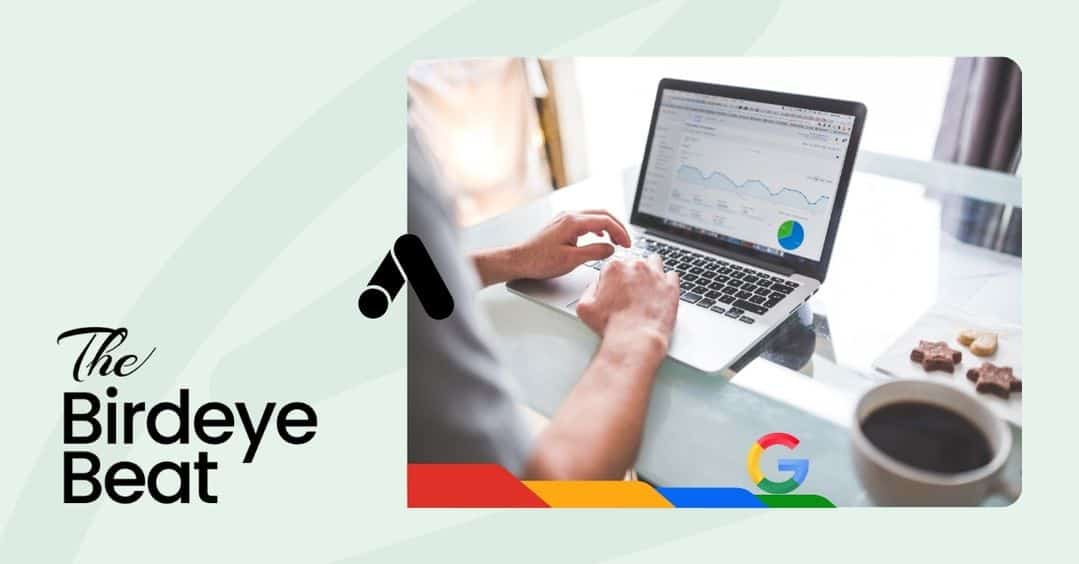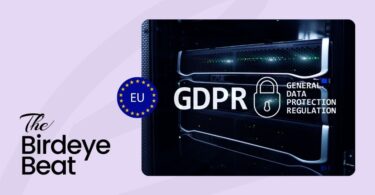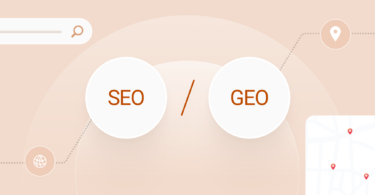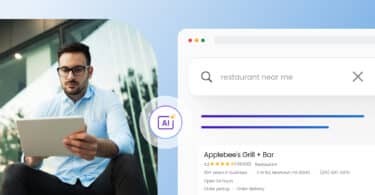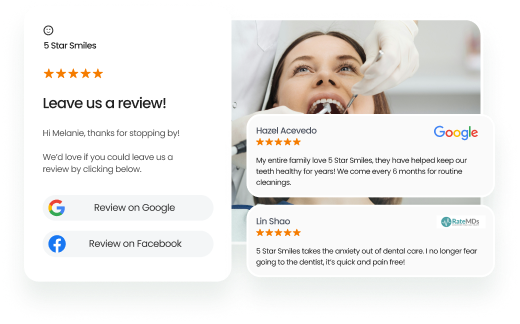Google is giving advertisers a new way to peek inside its automation black box. Starting July 2025, AI Max will appear as its own search match type in reporting dashboards, letting marketers track how automation performs compared to traditional match types.
Until now, AI-driven results were bundled into existing match types, leaving advertisers with limited clarity on whether automation was driving efficiency or simply inflating costs.
With this update, marketers can finally segment performance, measure ROI, and decide where automation fits best in their campaigns.
In this blog, we’ll break down what’s changing, why it matters, and how to use AI Max reporting to make smarter advertising decisions.
Table of contents
- What’s changing: AI Max is now a distinct search match type
- How AI Max works: A blend of signals
- AI Max vs Broad, Phrase, and Exact match types
- Why this matters: Transparency in automated search
- Part of a broader beta rollout
- What this means for marketers and agencies
- How Birdeye boosts Google Ads performance
- The future of search ads: Automation you can trust
What’s changing: AI Max is now a distinct search match type
Google has formally added AI Max as a match type category within Search campaign reporting.
That means advertisers running AI Max-enabled campaigns can now segment their Keywords tab by “Search terms match type” and see performance data specifically tied to AI Max queries.
Here’s what’s new:
- AI Max reporting includes key campaign metrics such as ROAS, CPA, CPC, and revenue.
- It separates automated results from traditional Broad, Phrase, and Exact match types.
- Advertisers gain visibility into how automation is performing, not just overall campaign results.
Here is what Aleksejus Podpruginas, Senior Google Ads Campaigns Specialist, says:
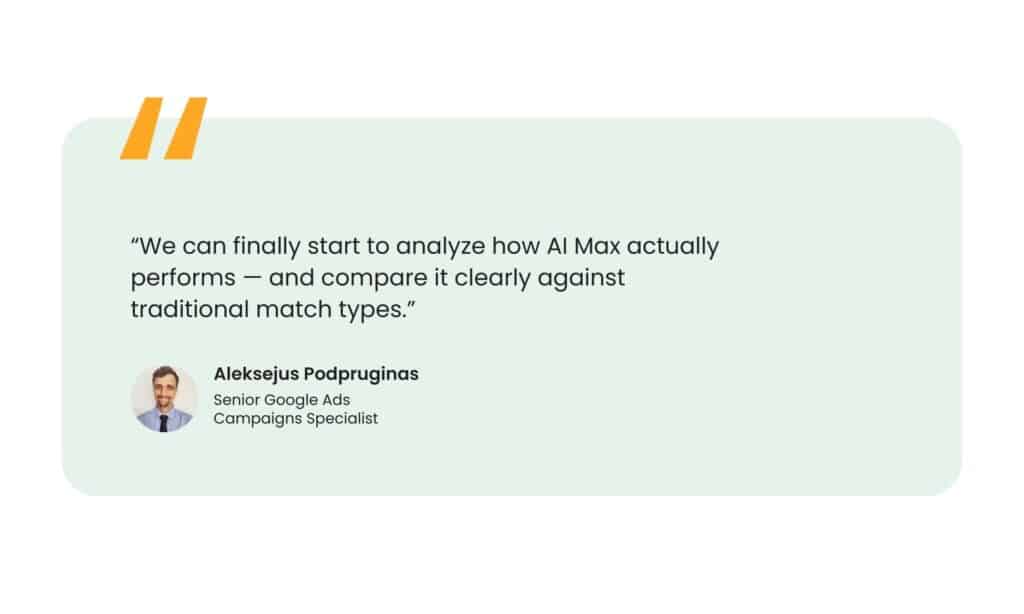
This small reporting change carries significant implications for search marketers who’ve long requested transparency around automation.
How AI Max works: A blend of signals
AI Max is powered by Google’s latest automation logic, combining:
- Broad match reach to expand beyond predefined keywords.
- Creative asset signals to align queries with ad text and visuals.
- Landing page content to surface queries related to site themes.
This hybrid approach expands reach but also raises concerns about cost control and relevance. Without reporting, advertisers had little clarity on how AI Max queries were driving spend.
Now, with AI Max isolated as its own match type, marketers can finally monitor whether automation is helping performance or simply broadening exposure at a higher cost.
AI Max vs Broad, Phrase, and Exact match types
Let’s understand how AI Max vs Broad vs Phrase vs Exact match types differ.
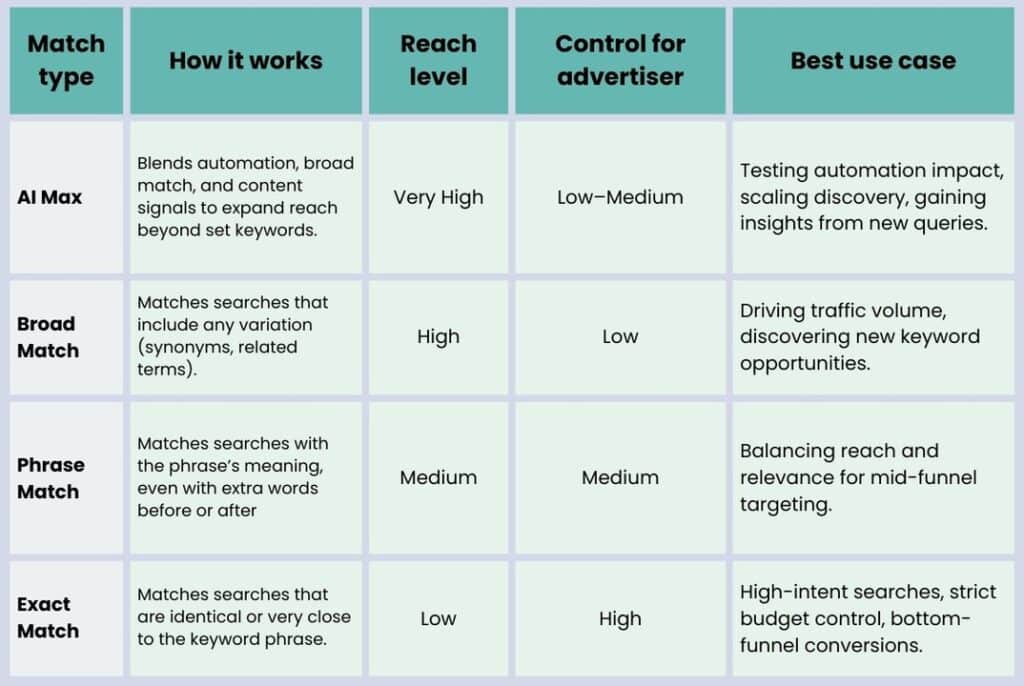
Pro Tip: Start by testing AI Max alongside Exact or Phrase match campaigns. This allows you to compare performance directly, measure ROI, and determine whether automation is delivering value before allocating more budget.
Why this matters: Transparency in automated search
Automation in search has always been a double-edged sword: more reach, but less control.
Here’s why this change is important for advertisers:
- Clearer insights: AI Max results are no longer hidden inside Broad match data.
- Smarter budget allocation: Teams can decide whether to scale, adjust, or disable AI Max.
- ROI accountability: Marketers can track efficiency instead of assuming automation drives results.
- Competitive advantage: Brands that analyze early will know if AI Max is worth the spend before competitors catch up.
As Thomas Eccel, Head of Google Ads, explained:

AI Max: redefining match, reshaping results.
Want to see the impact of Birdeye on your business? Watch the Free Demo Now.
Part of a broader beta rollout
This reporting update is part of the AI Max for Search campaigns beta, announced in May 2025.
The beta includes:
- The option to enable or disable AI Max in standard Search campaigns.
- Early testing opportunities for advertisers to measure the impact of automation.
- Match type-level reporting as a core visibility upgrade.
By treating AI Max as a formal match type, Google is signaling that automation is no longer an experimental add-on; it’s becoming part of the search ecosystem.
What this means for marketers and agencies
This update changes how teams should approach automated search.
For marketers:
- Test before scaling: Use reporting to measure whether AI Max is improving ROAS before shifting budget.
- Run side-by-side comparisons: Compare AI Max against Broad, Phrase, and Exact to see what’s driving conversions.
- Focus on context: Track which keywords and landing pages automation favors to refine content and targeting.
For agencies:
- Client transparency: Easier to explain how automation impacts performance and costs.
- Better reporting: Data can be segmented cleanly for client dashboards and presentations.
- Strategic control: Decide if AI Max adds value or erodes efficiency before committing client budgets.
How Birdeye boosts Google Ads performance
Google’s AI Max match type improves transparency, but ad performance still hinges on trust signals like reviews and ratings. That’s where Birdeye, a Google-certified partner, makes the difference.
- Google Seller Ratings (GSR): Birdeye helps businesses hit the 100-review and 3.5-star threshold to activate GSR, adding star ratings under ads that drive higher CTR and conversions.
- Review generation & management: Automated review requests and a central dashboard make it easy to collect, monitor, and respond to feedback at scale.
- Listings & reputation management: Birdeye Listings AI ensures your business info is accurate across Google, Bing, and directories, while actively managing customer reviews to protect brand reputation.
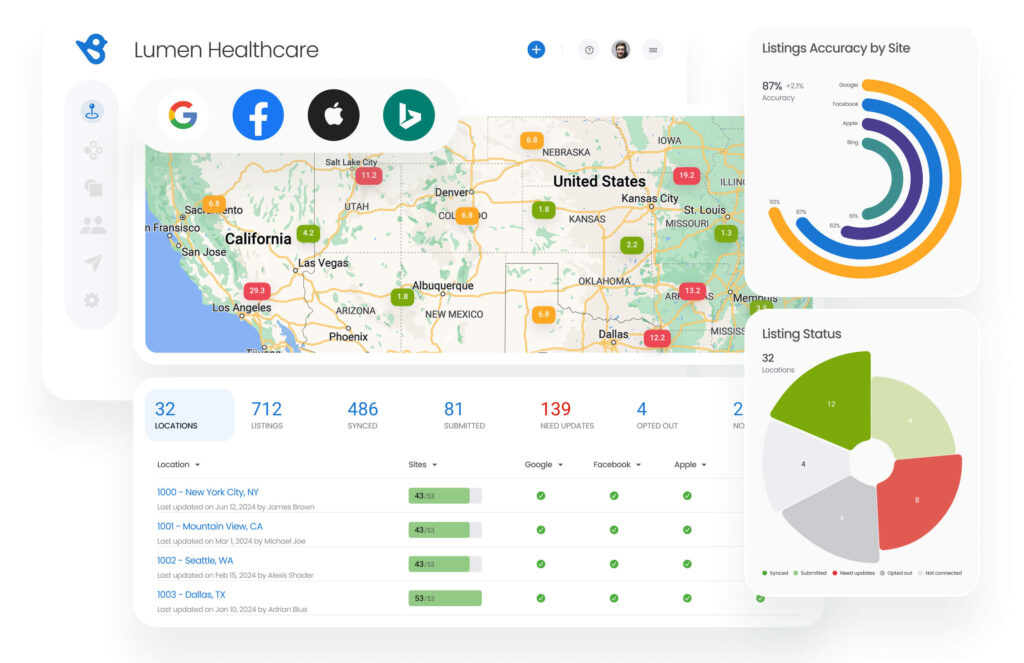
- Optimized ad spend: With stronger ratings and consistent listings, campaigns powered by AI Max deliver better ROI and more qualified traffic.
Google provides the automation, while Birdeye ensures credibility and visibility so your ads work harder
The future of search ads: Automation you can trust
For years, automation in Google Ads has expanded reach but blurred accountability. This update gives advertisers a lens into how automation performs, not just whether it runs.
By treating AI Max as a match type, Google is acknowledging what marketers have asked for: transparency, measurability, and the ability to compare automation directly with traditional strategies.
Automation isn’t going away, but with AI Max reporting, advertisers now have the data to decide when and where it makes sense.
Google Ads’ AI Max is now a new reporting framework that lets marketers measure automation’s true impact. The winners will be those who test early, analyze clearly, and budget wisely.
Stay ahead of the curve and boost growth together with Birdeye. Watch a demo.

Originally published
